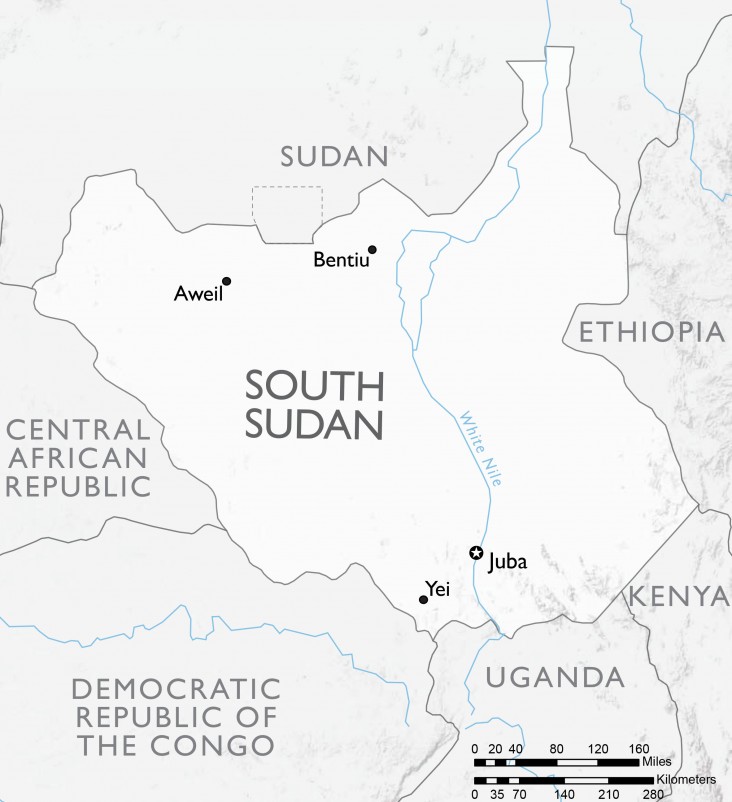- What We Do
- Agriculture and Food Security
- Democracy, Human Rights and Governance
- Economic Growth and Trade
- Education
- Ending Extreme Poverty
- Environment and Global Climate Change
- Gender Equality and Women's Empowerment
- Global Health
- Water and Sanitation
- Working in Crises and Conflict
- U.S. Global Development Lab

July 10, 2017
Food Security Situation
-
After more than three years of civil conflict, South Sudan remains one of the most food-insecure countries in the world. As of June 2017, Famine (IPC 5) conditions had subsided in Unity State, South Sudan due to a significant increase in humanitarian aid. [1] However, food security continues to deteriorate across the country with life-threatening hunger spreading in scale and scope, making 2017 the most food-insecure year in South Sudan’s history. By the peak lean season in July, approximately 6 million people—more than 50 percent of the current population—will experience Crisis (IPC 3) or higher levels of acute food insecurity and be in urgent need of emergency food assistance.
-
Food security conditions are rapidly deteriorating in Jonglei State, where households are experiencing Humanitarian Catastrophe levels of acute food insecurity, or famine at the household level, for the first time, meaning that starvation, destitution and death are evident. Food insecurity is also spreading in the Greater Bahr el Ghazal region and the Greater Equatoria region, traditionally the breadbasket of South Sudan.
-
As of June 2017, approximately 1.9 million refugees have fled South Sudan for neighboring countries and another 2 million South Sudanese remain internally displaced. Widespread insecurity continues to displace communities, disrupt livelihood activities, exacerbate food insecurity and impede humanitarian access to vulnerable populations.
Food Assistance Programs
-
Sustaining a robust humanitarian response is critical to saving lives and reducing the impact of severe food insecurity caused by the ongoing conflict. Since the start of the conflict, the Office of Food for Peace (FFP) and its partners—including the UN World Food Program (WFP) and the UN Children’s Fund (UNICEF)—have addressed the needs of South Sudan’s most vulnerable and conflict-affected populations through emergency food and nutrition interventions. In FY 2017, this assistance includes prepositioning enough food to feed over 2 million people for three months in areas of the country that have been cut off by seasonal rains and flooding.
-
FFP also partners with Catholic Relief Services to support food security and livelihoods interventions, including providing agricultural training for farming households and expanding access to safe drinking water, in Jonglei State.
Food for Peace Contributions
Total Contributions:
| U.S. Dollars | Metric Tons | |
|---|---|---|
| Fiscal Year 2017 | $336.6 million | 174,430 MT |
| Fiscal Year 2016 | $306.3 million | 173,087 MT |
| Fiscal Year 2015 | $320.9 million | 130,770 MT |
| Fiscal Year 2014 | $295.7 million | 119,040 MT |
| Fiscal Year 2013 | $166.0 million | 95,274 MT |
Fiscal Year 2017 Contribution Breakdown:
| U.S. Dollars | Metric Tons | |
|---|---|---|
| Title II Emergency | $206.7 million | 85,120 MT |
| Bill Emerson Humanitarian Trust (BEHT) | ||
| Emergency Food Security Program (EFSP) | $129.9 million | 89,310 MT |







Comment
Make a general inquiry or suggest an improvement.